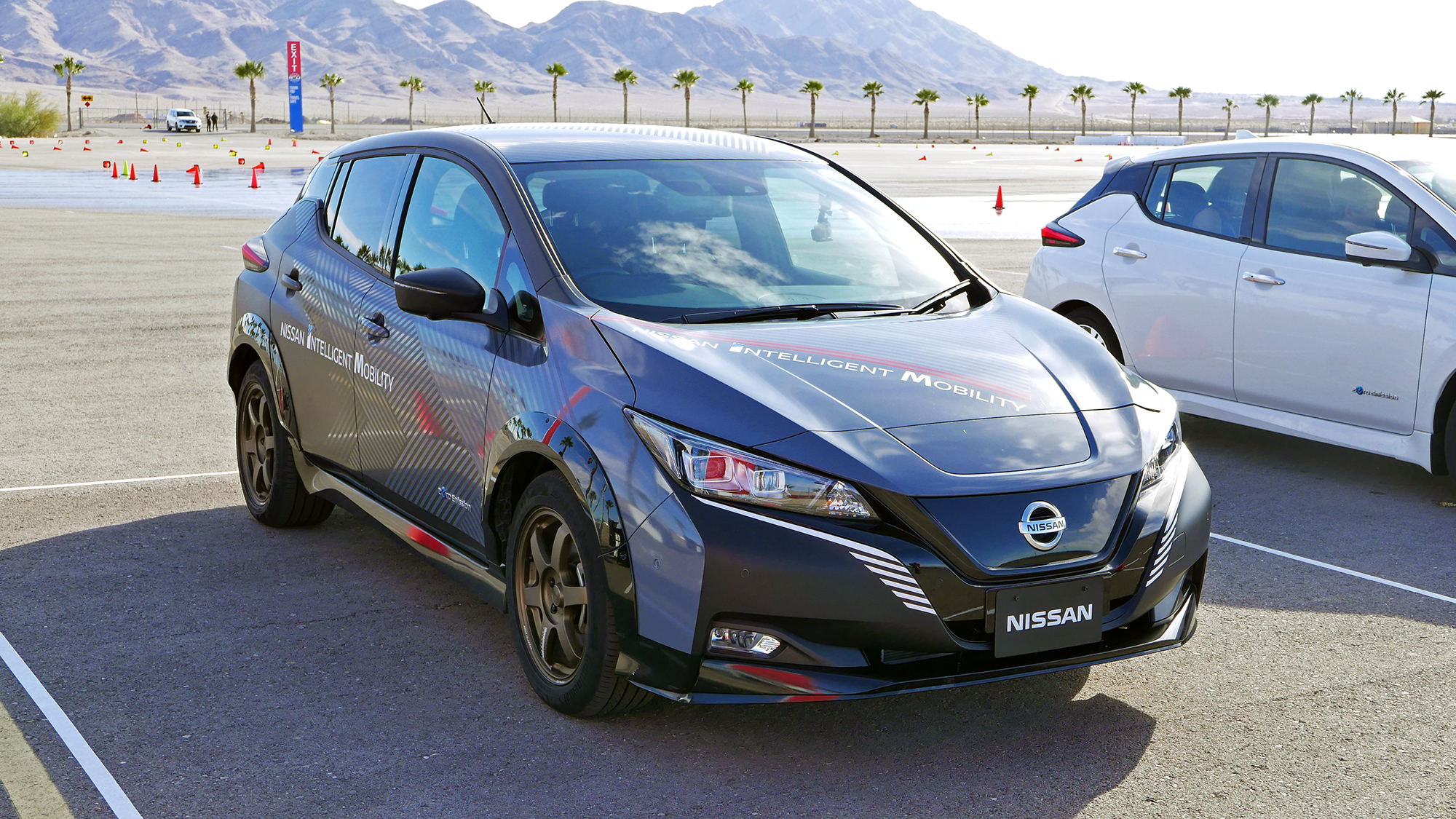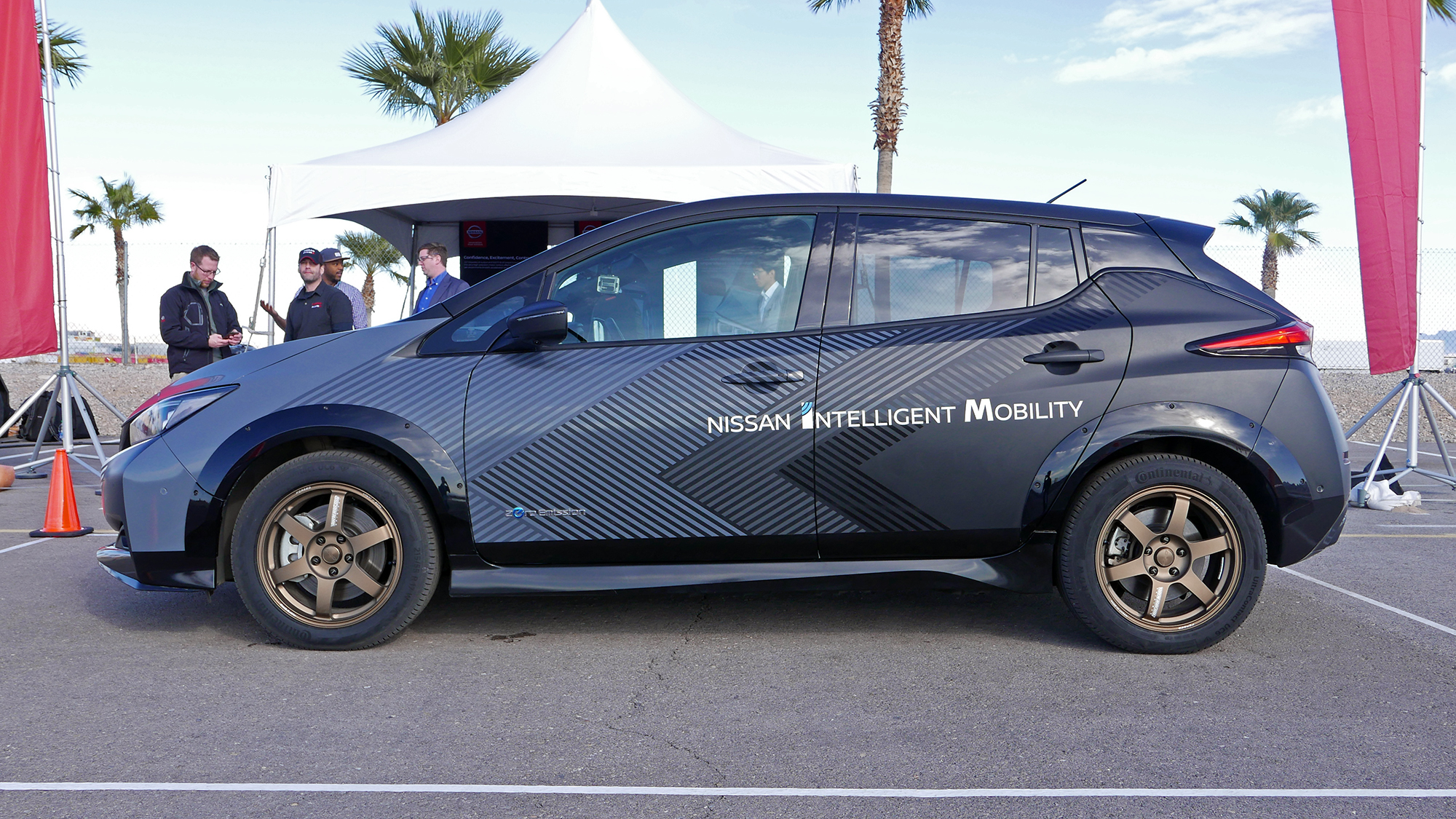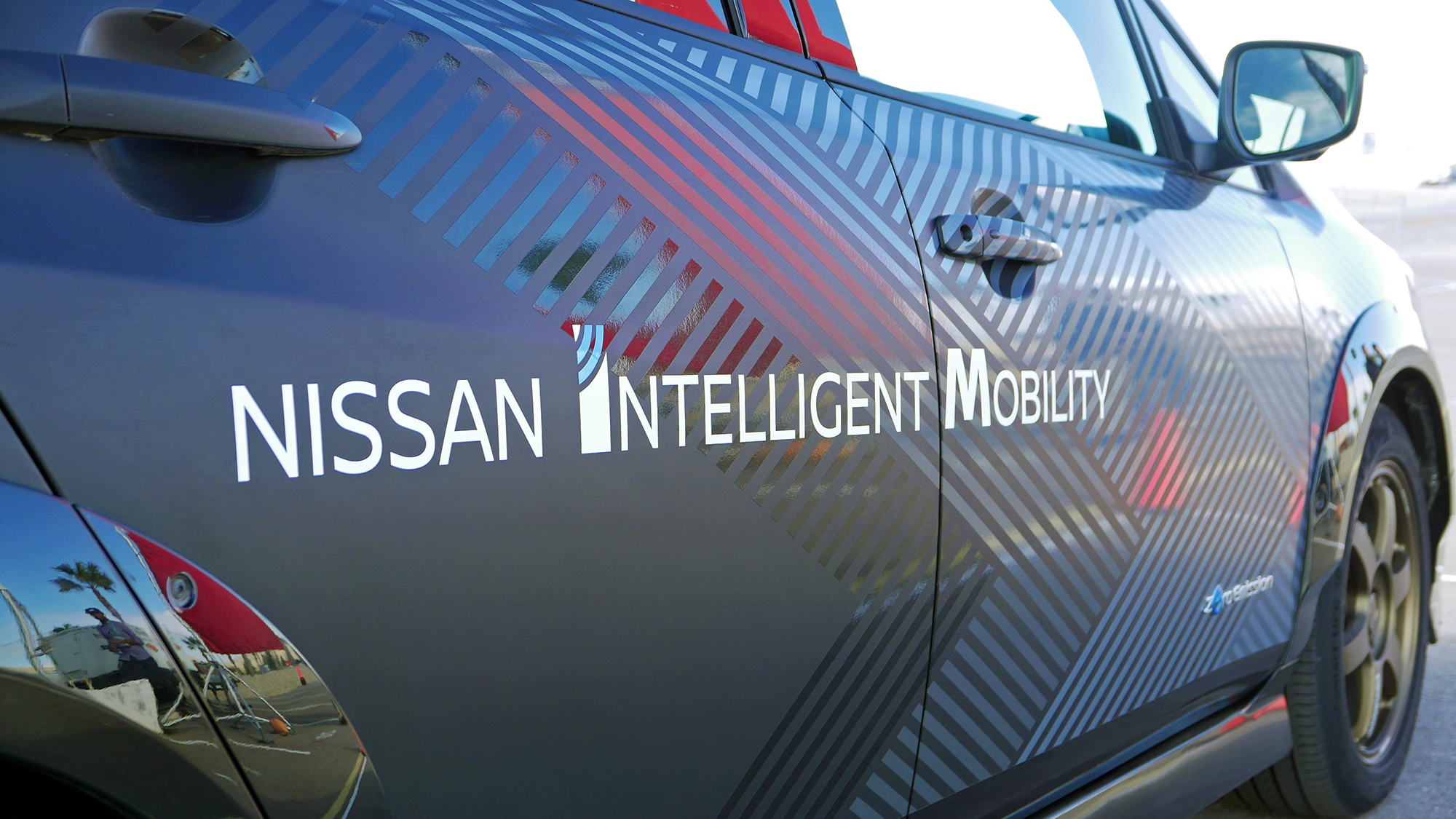I drove Nissan's e-4ORCE electric car prototype and it was a blast
Just don't call it the new Leaf

LAS VEGAS — The Nissan Leaf is old — really old. It was the first mass-production plug-in electric car upon its release 10 years ago. And though it's technically in its second generation now, under the sheet metal, Nissan's electric vehicle hasn't changed a whole lot over the last decade.
The Leaf is long overdue for a big upgrade and thankfully, one looks to be on the horizon. The automaker drove me out to a parking lot outside the Las Vegas Motor Speedway earlier this month to give me a sneak peek at the twin-motor, all-wheel-drive platform that will inspire its upcoming all-electric Ariya crossover, as well as the rest of Nissan's future electrified roster, likely beginning sometime next year.
Now, to be clear, what I drove in Las Vegas was not technically the upcoming Leaf. Rather, it was Nissan's e-4ORCE test car — a prototype that packages the company's dual-motor powertrain and torque distribution system that are both still in development inside the body of what, from the outside, looks a lot like a current Leaf.
As such, there's not much to say about the design of the e-4ORCE test car's exterior or interior. In fact, it's basically a late-model Leaf, save for those pretty, gold Volk TE37s — and, of course, in the way it drives.

Feeling the e-4ORCE working
To illustrate the new platform's advantages, Nissan set up an obstacle course where I had the opportunity to drive both a current Leaf e+ and the e-4ORCE concept. There were four trials here: two acceleration and liftoff courses designed to show off the e-4ORCE system's smoother power delivery and electronic braking, and two more courses that allowed me to test its prowess in the twisty bits.
Although I had never driven a Nissan Leaf before in my life, I immediately noticed the gulf between the acceleration and cornering characteristics of the two cars. In the first test, I was told to gun the throttle until I reached a pair of cones, where I'd get off the power and allow the car to coast to an eventual stop.
In some EVs — and indeed in the existing Leaf — the transition from full power at about 95 km/h (or about 60 mph) to none at all is a bit jarring. That’s because once the regenerative braking system kicks in, you almost feel like you’re being hooked backward. The weight of the car lurches forward and causes the nose to dive as a result, which is grating to feel every time you take your foot off the throttle.
Thankfully, this is exactly what the e-4ORCE system is designed to combat. By managing the torque split between the front and rear axles, e-4ORCE delivers acceleration and deceleration that is more gradual in its delivery and flatter-acting on the suspension, yet simultaneously more responsive to your inputs.

I felt this especially in the second test, where I was instructed to accelerate up to 40 km/h (25 mph), then lift off to about 20 km/h (12 mph) and then repeat that process three times. The see-sawing I felt in the normal Leaf was largely mitigated in the e-4ORCE test car — something I’m sure my backseat passenger and Tom's Guide's social media editor, Kenneth Butler, definitely appreciated.
However, I suspect Ken might've gotten car sick from the next trial — a slalom run where I had to negotiate tight left and right corners in quick succession, beginning at a constant 60 km/h (37 mph) before finishing the final two turns at 70 km/h (43 mph). The goal here was to once again demonstrate the improved stability of the e-4ORCE platform. But in this instance, the torque distribution and independent wheel braking was used to keep the car on its intended path.
Unsurprisingly, the test car felt noticeably more planted than the regular Leaf across the board. Steering was more responsive and immediate; understeer was reduced, allowing the car to maintain a constant radius, even as I pushed the tires past the limit of grip. And body roll was less pronounced. The Leaf negotiated the slalom in theatrical fashion, bumbling, squealing and skidding just to stay between the cones, whereas the e-4ORCE concept remained composed.
What's more, I could see as well as feel the system working, via a graphical representation on a tablet mounted in the middle of the e-4ORCE vehicle's dashboard, keeping me informed of where the power was going on both axles from corner to corner.

The final test involved a skidpan, where I had to navigate a constant radius on a wet patch of road at wide-open throttle. It became immediately apparent this was asking too much of the humble Leaf, which understeered wide every time and ran afoul of some cones, the front end bucking in agony as its little tires couldn't manage both the steering angle and power delivery at the same time. Compared to that, the test car — with its advanced four-wheel drive platform — was on rails; like traction control on steroids.
It's worth noting that Nissan also invited me to run the same courses in the e-4ORCE vehicle with the software system turned off. The experience was negligibly different from when I had driven the Leaf, albeit with much more power at my disposal. That's unsurprising, considering the e-4ORCE packs the equivalent of 304 horsepower and roughly 445 pound-feet of torque between its two motors, whereas the Leaf e+ tops out at a still-healthy but less-enthralling 214 horsepower and 250 pound-feet of torque.
e-4ORCE outlook
Overall, Nissan's e-4ORCE technology is shaping up to be the shot in the arm the automaker desperately needs to update its EV lineup. And while it remains to be seen whether all the positives I observed will carry over to the Ariya — like those robust power figures, for example — the improvements to cornering composure and ride quality might just put it in the same conversation as today's leading electric cars. Let's just hope the design, fit and finish and pricing doesn't spoil the party.
Sign up to get the BEST of Tom's Guide direct to your inbox.
Get instant access to breaking news, the hottest reviews, great deals and helpful tips.
Adam Ismail is a staff writer at Jalopnik and previously worked on Tom's Guide covering smartphones, car tech and gaming. His love for all things mobile began with the original Motorola Droid; since then he’s owned a variety of Android and iOS-powered handsets, refusing to stay loyal to one platform. His work has also appeared on Digital Trends and GTPlanet. When he’s not fiddling with the latest devices, he’s at an indie pop show, recording a podcast or playing Sega Dreamcast.
